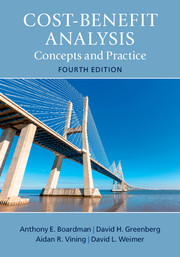Chapter 9 - Existence Value
from PART II - FUNDAMENTALS OF CBA
Summary
Within the CBA framework, people's willingness to pay (WTP) for a policy change comprehensively measures its social benefits. Though analysts sometimes elicit willingness-to-pay amounts through contingent valuation surveys (see Chapter 15), they prefer to make inferences about them from observations of people's behaviors (see Chapters 12, 13, and 14). Observed changes in consumption of a good whose price or quantity is affected by the policy change allow WTP to be estimated. For many, perhaps most, applications of CBA, analysts can reasonably assume that such estimates capture the entire WTP. Yet in some applications of CBA, especially those involving changes to unique environmental resources, people may be willing to pay for the existence of “goods” that they themselves will never actually “consume.” Correctly conceptualizing and measuring such existence values poses a challenge to the application of CBA.
In this chapter, we consider existence value as an additional category of benefit. It is often grouped with option value and quasi-option value under the heading of nonuse or passive use benefits. As discussed in Chapters 7 and 8, however, option and quasioption values are better thought of as adjustments to standard benefit measures to take account of various aspects of uncertainty rather than as distinct categories of benefits. In contrast, existence value is another meaningful benefit category, though one that poses problems of definition and measurement.1 After framing existence value as a special benefit category, we discuss the theoretical and empirical problems analysts face in measuring it.
ACTIVE AND PASSIVE USE VALUE
The notion that people may place a value on the very existence of “unique phenomena of nature” that they neither visit, nor ever anticipate visiting, was introduced into the CBA literature almost 30 years ago by John V. Krutilla.2 Consider, for example, a unique wilderness area. Hunters might be willing to pay to preserve the area because it either lowers the price of or increases the quality of hunting. Naturalists might be willing to pay to preserve the area because it provides a desirable area for hiking or birdwatching.
- Type
- Chapter
- Information
- Cost-Benefit Analysis , pp. 224 - 237Publisher: Cambridge University PressPrint publication year: 2017



